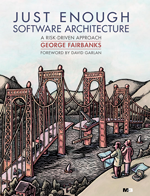Information model : Module view :: Snapshots : Runtime view
The Unified Modeling Language has a diagram type for showing classes: a class diagram. A class will have instances, but UML does not have a straightforward diagram type for them. People often use the UML collaboration diagram to show a collection on instances, which is also called a “snapshot” because it shows just an instant in time of a running program.
Separately, software architects have identified three primary viewtypes: Module, Component & Connector, and Allocation. (See Documenting Software Architectures).
Each viewtype is a category containing many views, such as the class diagram and snapshots we just discussed. Viewtypes are by definition hard to reconcile with each other, but it is easy to reconcile views within a viewtype. Let’s rename the “Component & Connector” viewtype to be the “Runtime” viewtype because we’re generalizing this viewtype to include all runtime views.
I have worked with information models and snapshots, and separately thought about module and runtime viewtypes, but today I recognized a connection between them. Information models, such as UML class diagrams, are a kind of module viewtype. You can inspect the source code (also part of the module viewtype) and directly see the classes and their attributes.
Instances, however, are not created until runtime, so are part of the runtime viewtype. You cannot see instances when you look at the source code unless you “run the code in your head” to envision what it will do.
There’s an interesting wrinkle though. A UML class diagram often includes more information than you can directly inspect from the source code. For example, the program might respect the invariant that a Vehicle has an even number of Wheels. You can’t tell this by looking at the code superficially, you’d have to either run the code or exhaustively analyze the code to validate the invariant. A class diagram would show the Vehicle and Wheel classes with an association, and the multiplicity would be EVEN, or have an equivalent annotation. So a class diagram is only mostly in the module viewtype.



